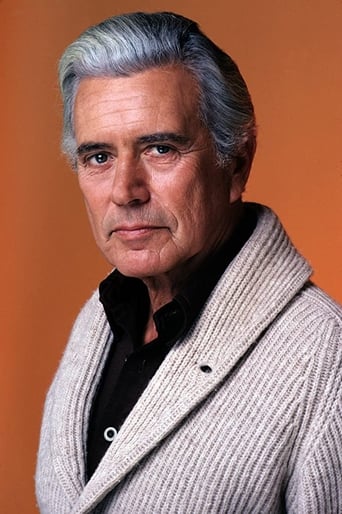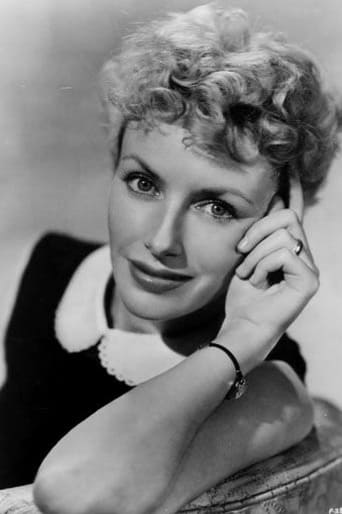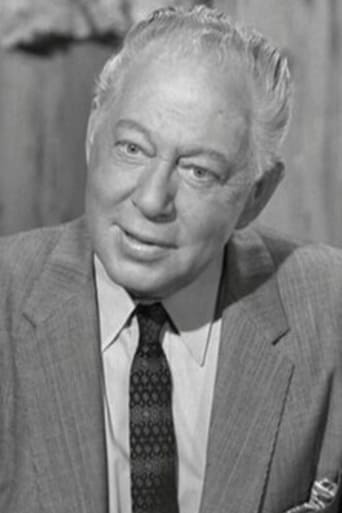Baseshment
I like movies that are aware of what they are selling... without [any] greater aspirations than to make people laugh and that's it.
Voxitype
Good films always raise compelling questions, whether the format is fiction or documentary fact.
Verity Robins
Great movie. Not sure what people expected but I found it highly entertaining.
Kien Navarro
Exactly the movie you think it is, but not the movie you want it to be.
AudioFileZ
In reviewing "The Captive City" one must acknowledge the great director Robert Wise. Wise will always be remembered for "The Sound of Music", "West Side Story", and "The Day the Earth Stood Still". But, for this viewer The Captive City fell through a crack as I'd never seen or heard of it. Until now, that was my loss…However, it's always a joy to find an old film in the noir vein with some "meat-on-the-bone", and this definitely qualifies.Following on the heels of the excellent sci-fi drama "The Day the Earth Stood Still" may have hurt this film in the annals of time a bit. I can't say that I know what it did to the box office at the time, but it certainly had slipped through my grasp in the intervening years. It certainly had a limited budget as evidenced by the "C-list" cast, yet John Forsythe puts forward an admirable lead that the good story was hung on. I couldn't find out for sure how the screenplay was concocted, but I definitely get the feeling it was a composite of real events occurring at the time in many places in a post-war USA. In other words: The Captive City was based on fact if dramatized. I'd say it did a good job of coming off as just that. It reminded me of "The Phenix City Story" in many ways as a town was in the midst of increasing graft whereby "the mob" wanted a bigger cut with more control. Something needed to be done as things began to take a murderous turn. Enter newspaper editor Jim Austin played by the aforementioned John Forsythe. Austin is contacted by a private investigator whose simple divorce case turned ugly when the woman who hired him estranged husband's associates apply pressure on him to back-off. The investigator contacts Austin since the police are part of the problem. He feels he must turn to the "power of the press" in hopes he can make public outcry turn against the criminal element. The only problem is that Jim Austin thinks he's living in an idyllic town and he initially thinks the investigator is a bit of a crackpot sensationalist. Just about the time Austin has a gnawing suspicion that he's wrongly pegged the man he is found dead with the cause being a hit and run accident complete with no witnesses. The story predictably from here as against large odds Austin pressures the police department for not having an interest in solving the case. Even if you've guessed the rest it doesn't matter too much because the movie moves along nicely and keeps the viewer interested.Wise has made a latter day excellent film noir drama with "The Captive City". The camera work is fantastic as it frames the subjects in a very involving and immediate way. Wise is one director with a wonderful eye for composition and he certainly chose correctly in using black and white in which to present it. You will not help but notice the depth of field in every shot, a technique learned from the great Orson Welles and augmented with the use of the special Hoag lenses whose focal length seemed to go on forever. Though not quite as overall involving as "The Phenix City Story" it is still quite good and highly recommended (in no way an embarrassment over half a century later). Wise was one of the finest directors of any time and even with a limited budget he proves it here. Also, of note is the introduction of young Martin Milner, who we would later come to love in the TV-series "Route 66" (reruns for me), as the Forsythe's staff photographer.
dougdoepke
When newspaper editor John Forsythe and wife rush into the police station with an urgent tale told in flashback, I thought Invasion of the Body Snatchers (1956). In fact, there are a number of similarities between the two films. Here, however, the menace is not seeds from outer space but plain old organized crime. The story is told in grippingly fluent fashion by versatile director Robert Wise. I really like the way the film uses unfamiliar faces in the important supporting roles, giving the docu-drama a more authentic appearance.Actually, the movie is rather educational since it reveals the various pressure points within a community where criminal influence can make a difference. Note how newspaper policy can be manipulated by advertising revenue; how church involvement can be influenced by congregation size; how police policy can be set by civic elders instead of the law. That is the point of the movie-- to show how a community can be corrupted by exploiting these various pressure points. At the time (1951), the Kefauver Committee on Organized Crime was making national headlines, accounting for the Senator's public service epilogue.Surprisingly for a crime drama with noirish overtones, the violence and menace are mostly understated. Menace consists mainly of warnings to crusading editor Forsythe from ordinary-looking people. For me, however, the scariest part was neither the beating nor the hit-&-run, but the sudden transformation of affable used car salesman Andy (Jess Kirkpatrick). In social scenes showing the town's normality, Andy comes across as the typical friendly, outgoing salesman, but later, when the pressure's on, he slides into a startlingly sinister personality-- one of the many parallels with Body Snatchers. Filming on location in grainy black&white amounts to a real plus for an authentic feel. Forsythe and Camden are excellent in their central roles, without going over the top. There's a low-key intensity to the narrative that rivets interest, but never reaches the emotional pitch of the sci-fi classic. In my book, this is one of those polished little B- productions that Hollywood used to turn out with some regularity. Too bad that they have no counterpart in today's over f-x'ed cinema.
MartinHafer
John Forsythe stars in this excellent crime drama directed by Robert Wise. Unlike most movies involving the mob, this one is quite a bit different, as you never actually get to see many of the crooks and the menace is much more implied than actual. This isn't bad, as it makes the film seem less predictable and more realistic.Forsythe is a newspaper owner in a small town where you'd never expect the mob. When a local private detective comes to Forstythe with stories of mobs and payoffs, the newspaperman can't believe it and only does a cursory investigation. But, when a bit later this detective is killed, Forstythe starts to wonder if there really is more to the story. Unfortunately for him, when he digs deeper, he puts his life on the line as well.Senator Kefauver (who made a name for himself crusading against organized crime) gives an epilogue in which he says the story is true. I'd really like to know more, though IMDb doesn't have any information about the case. If anyone can give me more info, I'd appreciate it.
dbdumonteil
It's strange how this Wise movie influenced "Invasion of the body snatchers".The construction is exactly the same:a car belting with a couple inside:close shots on their faces,full of fear.They take refuge in a police station,and the man begins his story which he records on a tape.Like in "body snatchers",there's a description of Kennington,a peaceful town,but little by little,the witness,a journalist, reveals us what lies beneath.And by the way,in 1945,Wise made a movie called "the body snatcher"!The town seems to be under Sirak's thumb,a local tycoon who has a hand in shady and illegal business.The police is totally corrupted,and ,it's the last analogy with "Body snatchers" ,ordinary people seem contaminated too (the car salesman),or about to be(the journalist's partner).A private eye tried to spill the beans,but he was murdered soon after having asked for the journalist's help.The murder scene is masterfully directed by Wise whose editing science is astounding:the private,driven back against a dead end street,in a symphony of black and white,by a mysterious car which will come back as an ominous messenger of death,then,abruptly,a trumpet bellowing out in a nightclub.Violence always takes place in the night,in Wise 's world (remember the end of "odds against tomorrow",or even the rumble in "west side story").The characters are realistic to a fault.No stereotype,no real baddie (except for the gangsters whom we hardly see;their presence can be felt everywhere though,that is to say how great Wise is!)It seems that Sirak is actually overtaken by events.Characters of secondary importance are wonderfully depicted:Sirak's wife,whom we see only twice in the movie appears at first as an indifferent woman,then ,a fearful,pitiful one,an alcoholic at that.The main message of the movie is that we are not helpless,as the private detective's wife told the journalist soon after her husband 's death.If the gangsters took over the town ,it's because of people (ordinary people) who are too afraid of getting mixed up in a fight against the strong and the mighty,or worse,because bribes make ends meet.In 1952,with no star,a low budget,and a great modesty,Wise showed the way to modern film noir.






